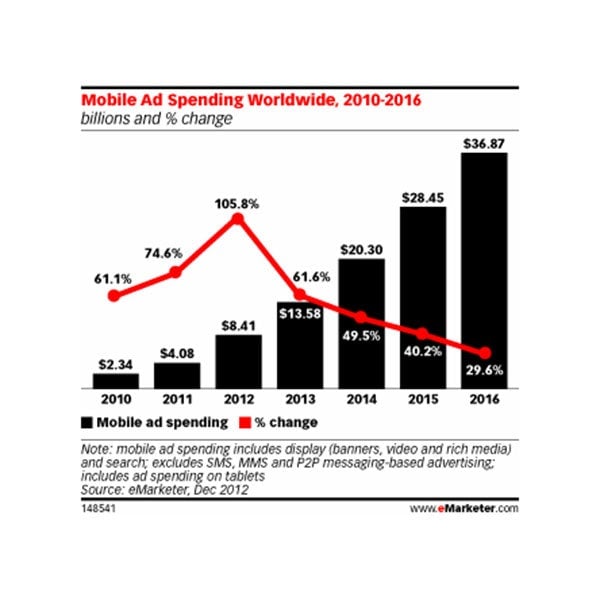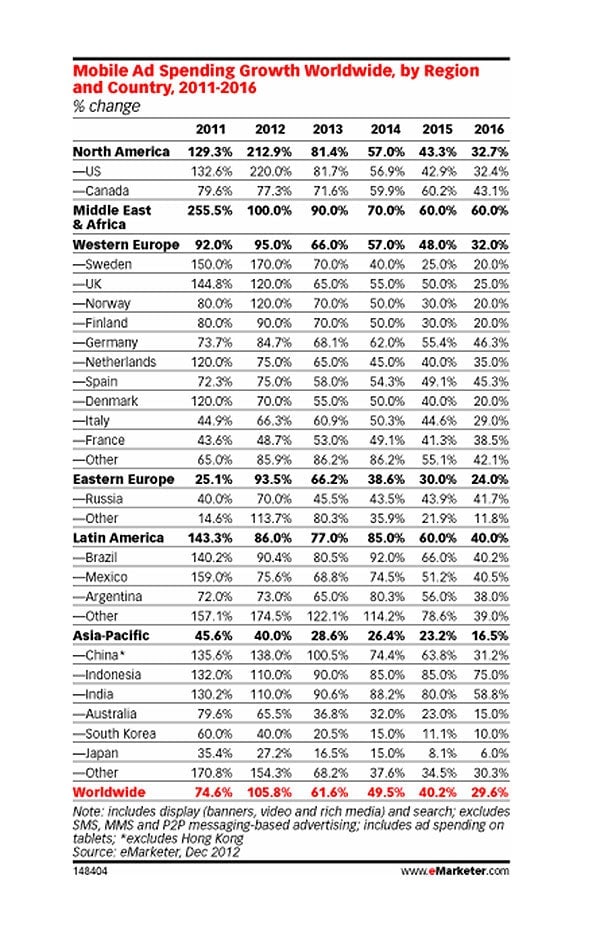By 2016 in North America, mobile advertising could be bigger than today’s entire online ad market
World-wide spending on mobile advertising will quadruple by 2016, predicts projects eMarketer, an industry publication that covers marketing and e-commerce. After mobile ad spend more than doubled worldwide from 2011 to 2012, due in no small part to moves by giants like Facebook, this isn’t a controversial call. The trend is strongest in regions that already have high mobile penetration: In the US, mobile search and display ad spending was up 220% in 2012 from the previous year. Advertisers in North America spent $30 per mobile internet user in 2012.

World-wide spending on mobile advertising will quadruple by 2016, predicts projects eMarketer, an industry publication that covers marketing and e-commerce. After mobile ad spend more than doubled worldwide from 2011 to 2012, due in no small part to moves by giants like Facebook, this isn’t a controversial call. The trend is strongest in regions that already have high mobile penetration: In the US, mobile search and display ad spending was up 220% in 2012 from the previous year. Advertisers in North America spent $30 per mobile internet user in 2012.
Other regions are showing equally huge growth, from India (up 110%) to China (up 138%).

Running eMarketer’s numbers for North America, if they’re right, mobile ad spending will grow from $30 per user in 2012 to about $160 per user in 2016, assuming the number of mobile users doesn’t change. (A reasonable assumption, given that mobile penetration in North America appears to have reached saturation.) That is bigger than the total online advertising spend per user in North America in 2012, which was about $152 per user. Some of that growth will be driven by existing feature-phone users switching to smartphones.
There are two ways to look at this projection. One is that it’s wildly optimistic, considering that both advertisers and publishers seem to agree that today’s mobile ad formats simply don’t work and are consequently sold at only a small fraction of the value of desktop ads.
On the other hand, Facebook has lately emphasized that it is only just beginning to experiment with types of mobile advertising, and some early results from their experiments, such as advertisements for apps, have yielded better-than-expected results.
The future of mobile advertising is not, therefore, foregone. In order for ad dollars to follow users onto their mobile devices, where they are spending more time than ever, advertisers have to figure out what kinds of advertising actually work on smaller screens.